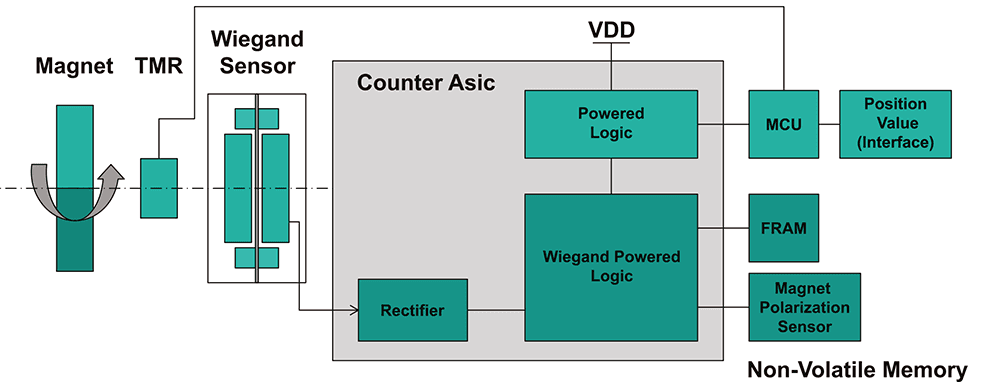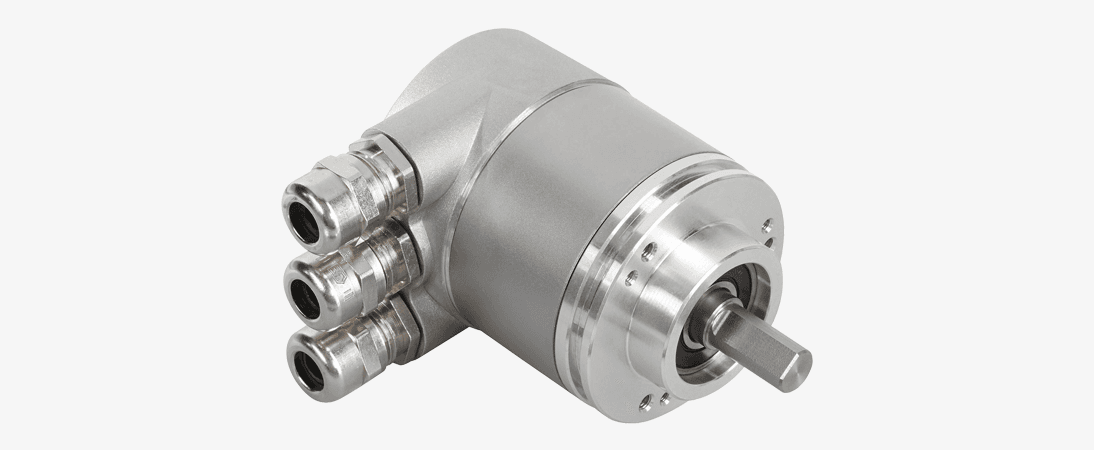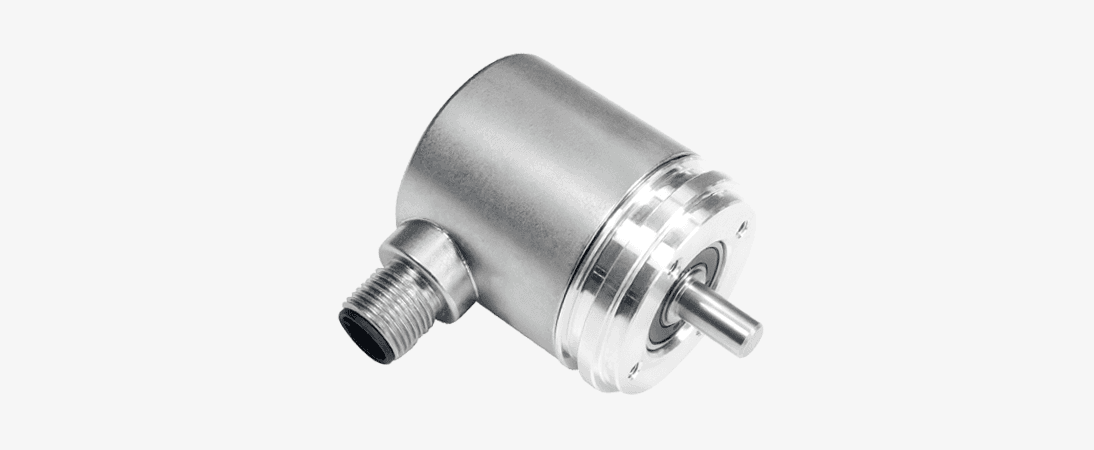
The Benefits of TMR Technology on Rotary Encoders
How Does TMR Work?
A TMR (Tunnel Magnetoresistance) element consists of two ferromagnetic layers separated by a thin non-magnetic, non-conductive insulation layer. The magnetic orientation of one layer is fixed, while the free layer’s orientation changes with the external magnetic field direction. The probability of electrons tunneling through the insulation layer depends on the relative alignment of the free layer. This change alters the electrical resistance of the TMR element, allowing precise measurement of the magnetic field direction.

Benefits for Rotary Encoders
High Sensitivity and Accuracy
TMR sensors offer significantly higher sensitivity and accuracy compared to Hall effect sensors, leading to better signal-to-noise ratios and higher resolution. This high sensitivity enables TMR sensors to achieve near-optical levels of resolution, making them ideal for precision applications.
Robustness in Harsh Environments
TMR sensors excel in harsh environments, being less susceptible to temperature fluctuations and environmental conditions. This robustness makes them suitable for heavy-duty machinery and outdoor applications where traditional sensors might fail due to exposure to vibration, shock, and temperature variations.
Low Power Consumption
Known for their low power consumption, TMR sensors are particularly beneficial in applications where energy efficiency is crucial, such as battery-powered devices and remote sensing applications.

How TMR compares to other magnetoresistive sensing technologies. TMR provides a larger effect for a better signal to noise ratio and more sensitivity leading to improved sensing accuracy.
Comparison with Hall Effect Sensors
While Hall effect sensors have been widely used due to their simplicity and cost-effectiveness, TMR sensors offer several advantages:
Sensitivity and Accuracy: TMR sensors offer higher sensitivity and accuracy, providing better performance in precision applications.
Environmental Robustness: TMR sensors are more resistant to environmental stressors, ensuring consistent performance in extreme conditions.
Power Efficiency: TMR sensors consume less power, making them more suitable for energy-sensitive applications.
In conclusion, TMR technology represents a significant advancement in magnetic sensing, offering superior sensitivity, accuracy, and robustness compared to traditional Hall effect sensors. As the demand for high-performance, reliable sensors grows, TMR-based rotary encoders are well-positioned to meet these needs, providing precise position feedback in a wide range of industrial applications.
Application in Rotary Encoders
Rotary encoders utilizing TMR technology benefit from enhanced resolution and accuracy, making them suitable for a broad range of industrial and automotive applications. The compact size and cost efficiency of TMR sensors simplify installation and reduce overall system costs. Their ability to withstand harsh conditions further makes them ideal for use in construction and agricultural machinery.
POSITAL Sensors with TMR Technology – Precision Redefined
Maximum accuracy, ultimate sensitivity – for top industrial performance.
TMR技術を採用した当社のNEXTGENエンコーダについて詳しくご覧ください

POSITALのNEXTGENへの取り組み
POSITALは、製品ポートフォリオのメジャーアップデートを開始します。NEXTGENと名付けられたこの取り組みにより、POSITALはIXARCロータリーエンコーダとTILTIX傾斜計に新しい測定技術と信号処理技術を導入します。




